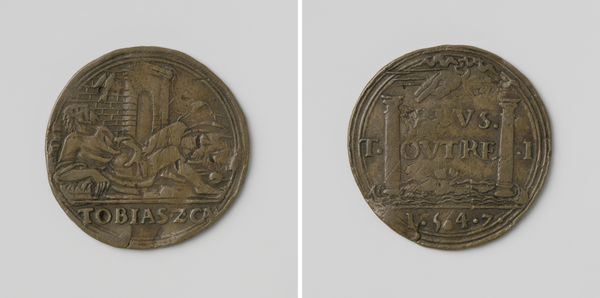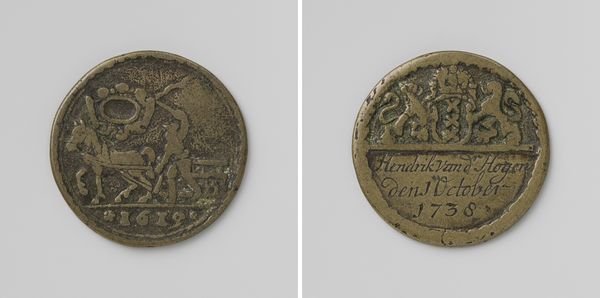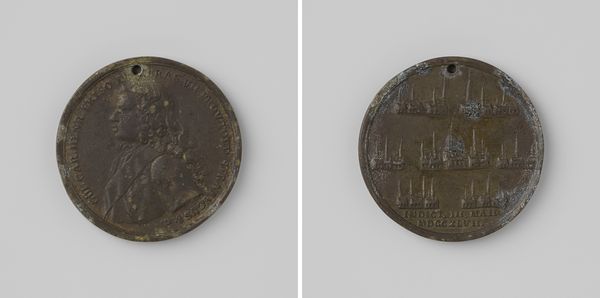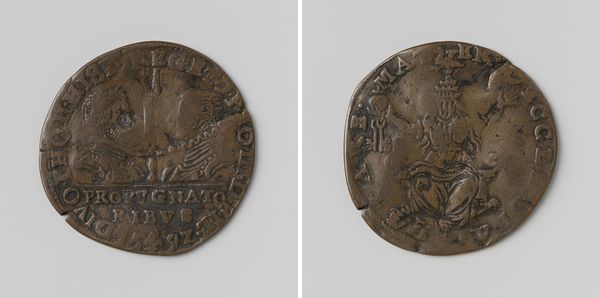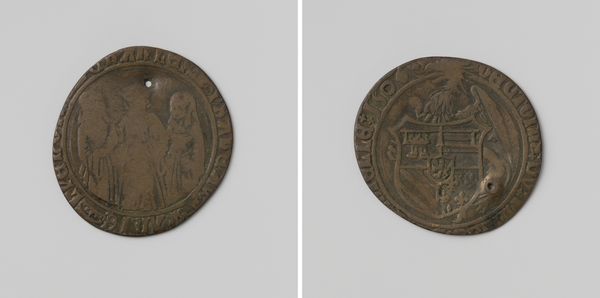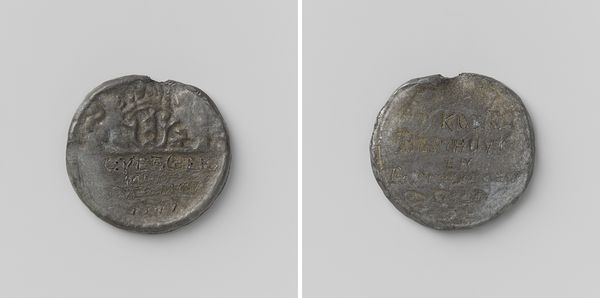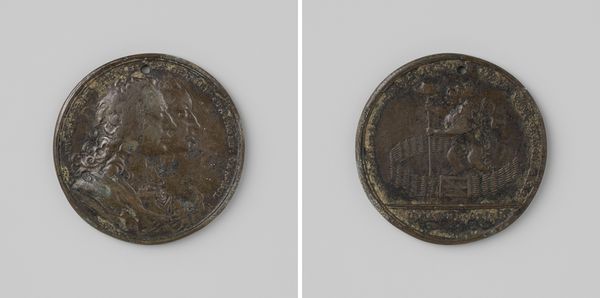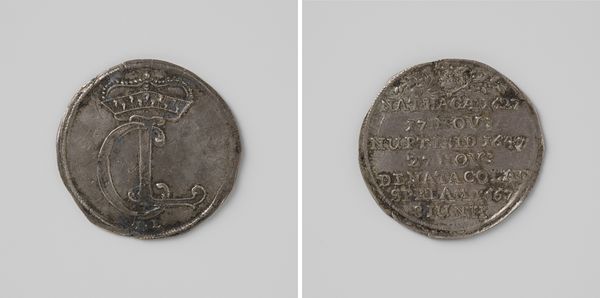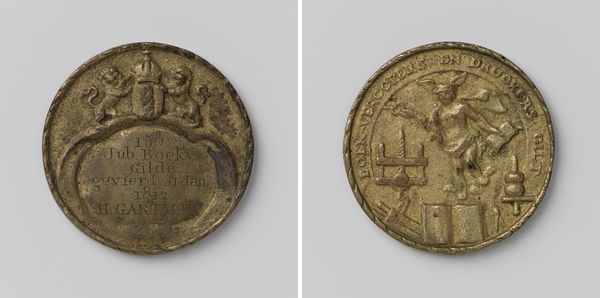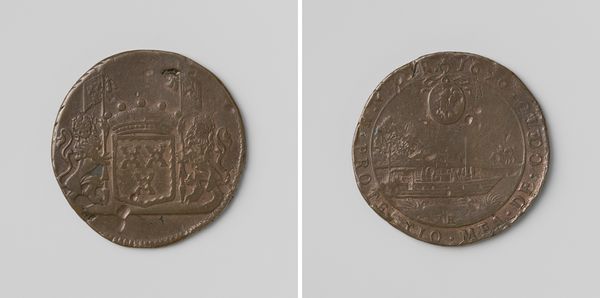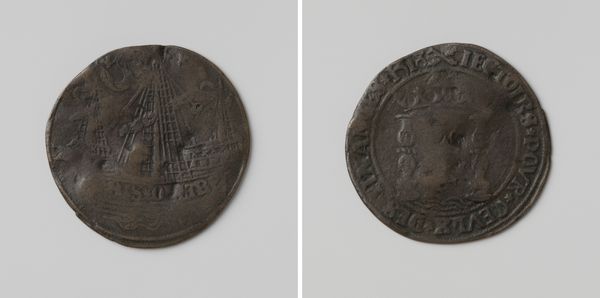
Maximiliaan, graaf van Buren, legeraanvoerder in dienst van Karel V, verovert Frankfurt am Main 1547
0:00
0:00
carving, metal, relief, sculpture, engraving
#
portrait
#
carving
#
metal
#
relief
#
11_renaissance
#
sculpting
#
sculpture
#
carved
#
history-painting
#
engraving
Dimensions: diameter 2.9 cm, weight 4.90 gr
Copyright: Rijks Museum: Open Domain
Curator: This impressive Renaissance-era engraving is a medal, dating to 1547. It commemorates Maximiliaan, graaf van Buren, an army commander under Charles V, and his conquest of Frankfurt am Main. Editor: The overall tone, to me, speaks volumes about power, resilience, and the spoils of conflict. The scale, though miniature, doesn't diminish the sense of triumph, but I also feel somber shadows of historical conflicts hanging about this piece. Curator: Medals like these were common propaganda tools, almost a kind of social media of the era. The iconography tells a very specific story that resonates deeply with Renaissance values of military might and expanding empires. Do you notice the choice of the materials? Editor: The use of metal seems crucial to the message. It speaks of permanence, authority, and wealth. It's literally solidifying the victory, isn't it? But beyond glorifying individual achievements, pieces like these normalized imperial expansion, creating a culture receptive to further aggression. Curator: Yes, that is interesting. This piece offers a glimpse into the construction of power during that era. What about the other side? The motto, Plus Oultre. Editor: That’s a reminder of Charles V. Curator: Quite right. It seems deeply entwined with symbols of ambition. To strive for 'more beyond.' It speaks to me of constant territorial disputes, battles and so much displacement… I can imagine it triggered both a sense of identity for those in power and feelings of erasure for people like me and many other minorities today. Editor: And how do we see continuity from this medal to symbols in our modern context? We need to always think intersectionality with art and social movements. The question I constantly ask myself is how can this artwork inspire us today to fight against marginalization and reclaim histories and voices suppressed through colonialism and imperialism? Curator: Well, the use of this emblem certainly continued for quite some time, appearing everywhere from architecture to flags, serving as an ever-present symbol. It all serves as an ever-present symbol. Food for thought... I find it so interesting how artifacts become entrenched in cultural identity over time. Editor: Indeed. Reflecting on pieces like this pushes me to be very thoughtful about how art history impacts current debates. It underscores our contemporary role in interpreting past actions as catalysts for much-needed societal change and social justice.
Comments
No comments
Be the first to comment and join the conversation on the ultimate creative platform.

